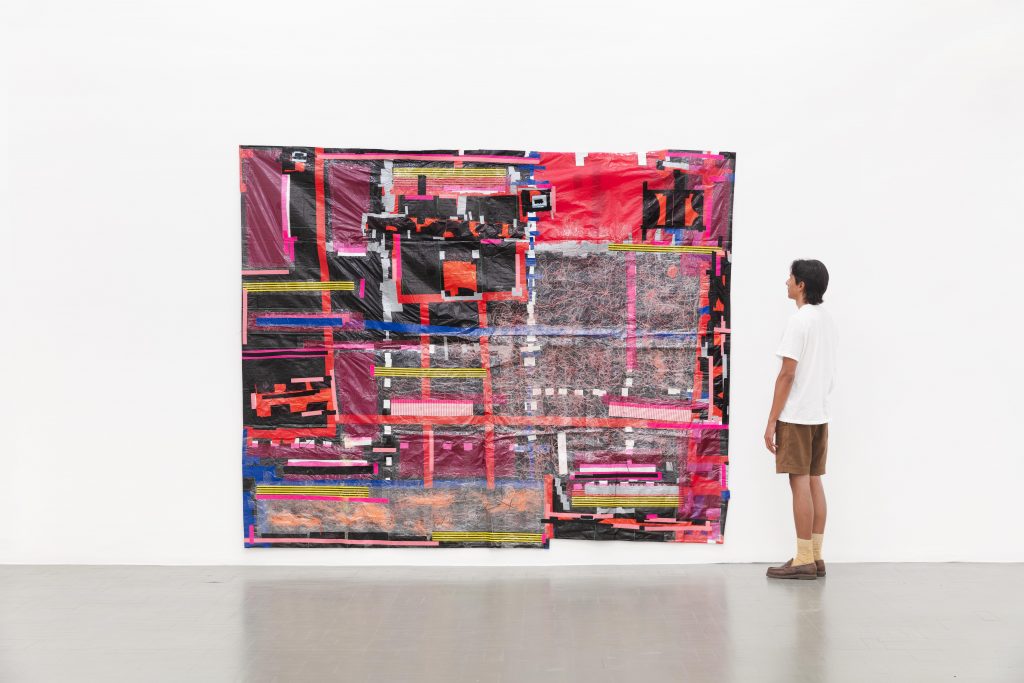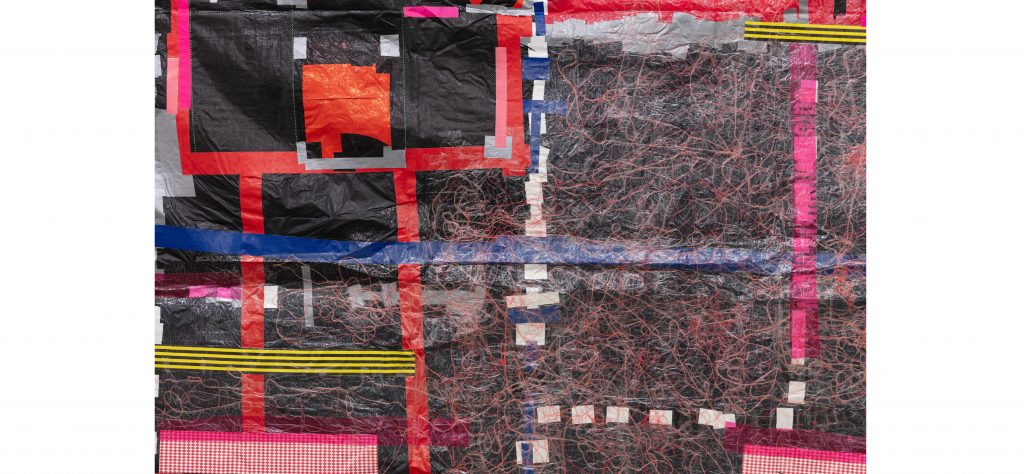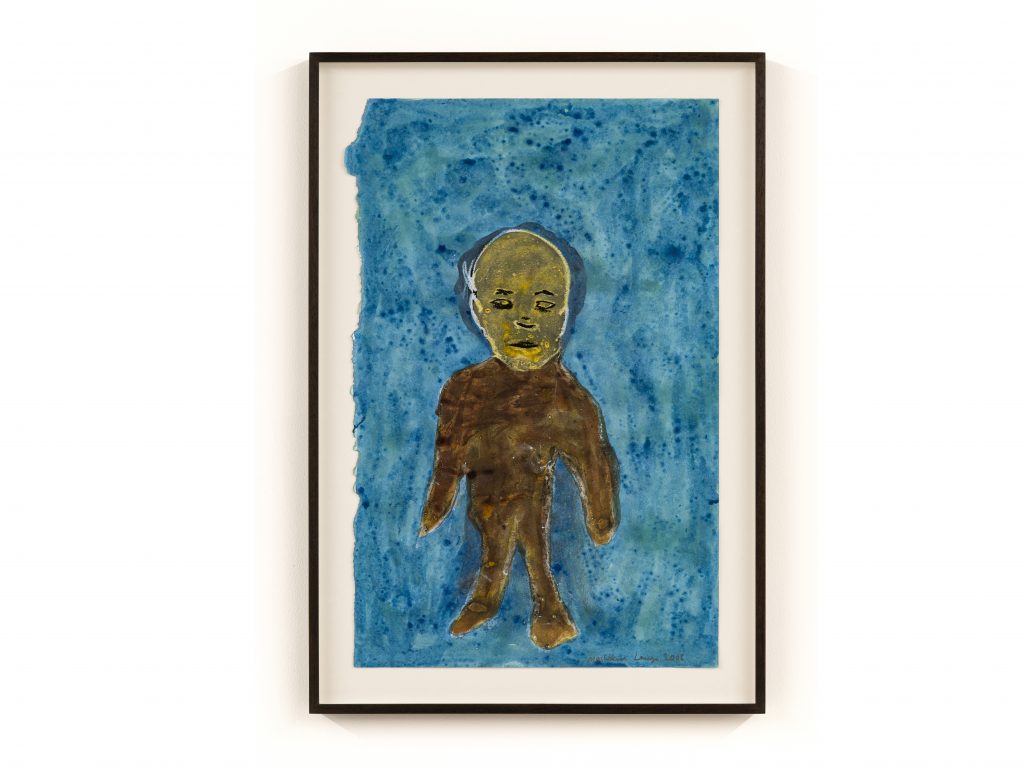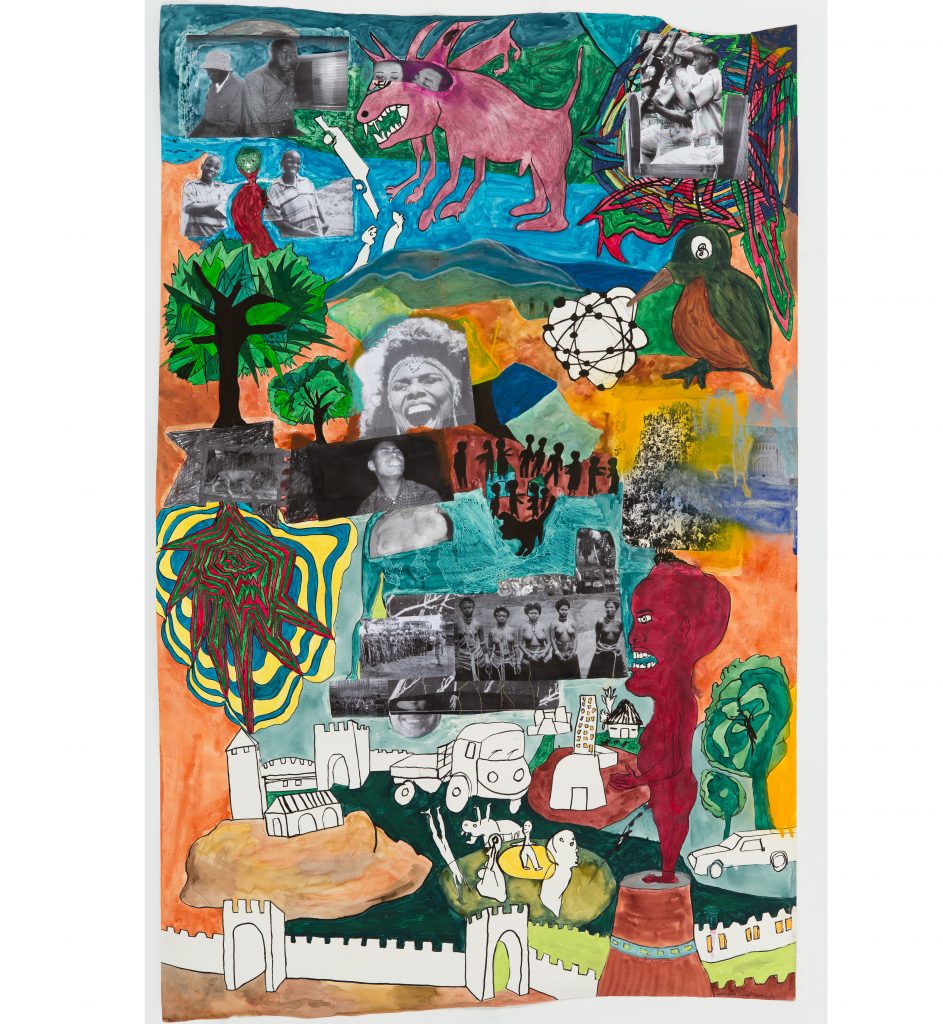Lost and found: the rediscovered work of Moshekwa Langa
At Art Rotterdam, Stevenson presents an overview of work that Moshekwa Langa has created over the past 20 years, complemented by recent pieces. The South African artist’s work revolves around themes such as travel, belonging, displacement, memories, movement, and borders. Gallery owner Joost Bosland describes it as unique that so much work by an artist of Langa’s stature is still available. Next year, Langa will have a major exhibition at Melly that surveys his entire career.

That Moshekwa Langa addresses themes such as displacement, identity and inclusion/exclusion in his work is hardly surprising. These themes run like a thread through his life. Langa was born in 1975 in a place that did not officially exist. Bakenberg, a small village in northern South Africa, did not appear on any maps during Apartheid (1948–1994).
Bakenberg was part of Lebowa, one of ten so-called homelands whose maps only indicated the outer borders, while places within them were left blank. When Langa discovered this, it confused him, he says from his studio in central Amsterdam. So, it is no coincidence that fictional and incomplete maps frequently appear in his work.
His birthplace also plays a central role in his seminal work Where do I begin? from 2001. In the four-minute video, we see people boarding a bus along a dusty road from the perspective of a small child. Langa maintains a clear narrative: we see only a series of anonymous legs. Yet the images are rich in detail: a perfectly ironed pair of trousers next to worn-out shoes, a floral skirt, an umbrella, an overstuffed bag, stained clothes, a missing sock.
The phrase Where do I begin, taken from the song of the same name by Shirley Bassey, of which a fragment can be heard, suggests the start of a journey or a story. Combined with the repetitive movement, it reflects themes that frequently appear in Langa’s practice and life: travel, belonging, displacement, memory, identity, inclusion and exclusion, movement and borders. Where do I begin was acquired by Tate Modern in 2018.

International recognition
Due to the themes Langa explores in his work, he has long been in the international spotlight. His work has been featured at the Venice Biennale (2003 and 2009) and São Paulo Biennale (1998 and 2010), as well as biennales in Johannesburg, Istanbul and Havana (all in 1997), Gwangju (2000) and Berlin (2018). It is also part of collections at institutions like MoMA in New York and MHKA in Antwerp. Langa has also exhibited at Fondation Louis Vuitton and Fondation Kadist in Paris, MAXXI in Rome, the New Museum and International Center of Photography in New York, Kunsthalle Bern and the Walker Art Center in Minneapolis. In the Netherlands, Langa has had exhibitions at Museum Boijmans Van Beuningen (1998) and in 2022, at The Hague’s KM21 with the telling title Omweg (Detour). Next year, Kunstinstituut Melly in Rotterdam will be joining this list. Despite this, Langa remains somewhat of an outsider in the Dutch art scene. "Who is this man who keeps showing up at openings?" asks Langa, jokingly downplaying his status.

A game of chance and texture
In addition to videos, Langa also works in different types of media, from drawings to photography and from collages to installations. He enjoys experimenting with simple materials such as salt, coffee, receipts, bubble wrap, pigments, cigarette butts, tape, Vaseline, maps, bleach, advertisements, corrugated iron, lacquer, plastic and charcoal.
Most of his work is done on paper. He creates them on the floor of his studio by applying paint in puddles, which extends the drying time and allows room for chance. The texture of his typically abstract works is therefore often thick. Langa layers materials in much the same way he layers meaning in his work.
Langa first came to the Netherlands in 1997 to participate in the Rijksakademie residency programme in Amsterdam. He stood out with work that combined text, sculpture and sound recordings. He initially planned to stay for three more months, but ended up returning to South Africa only intermittently. He had changed and no longer fit into Bakenberg. Amsterdam became his base, though he frequently worked in Paris, Berlin and London.

Missed rent
In 2017, Langa had two exhibitions in Paris, one at Fondation Louis Vuitton and the other at Fondation Kadist. He spent several months in the French capital setting up these exhibitions. This stay ultimately led to the loss of his Amsterdam studio—and with it, all the work he had created since first arriving in the Netherlands.
"I wasn’t earning much at the time, but what I always did was pay my rent in advance. For example, I would pay for the coming year, so I wouldn’t have to worry about it. Even when I left for Paris, I had paid in advance. But as it turned out, I had underpaid by one month. When I returned, I saw my entire studio in a container." The container had been stored by Langa’s Belgian gallerists. Eventually, Stevenson managed to transfer the collection to Johannesburg. Gallery owner Bosland also recovered other lost work from Athens and London.
Now supplemented with new works, an initial selection from 1997–2017 is on display at Art Rotterdam in Stevenson’s booth. A Langa installation is also on view at the Kunstmuseum in The Hague as part of the New New Babylon: Visions for Another Tomorrow exhibition. It is the first Langa installation acquired by a Dutch museum. A broader overview of Langa’s work will follow in 2026 at Kunstinstituut Melly in Rotterdam.
Written by Wouter van den Eijkel


